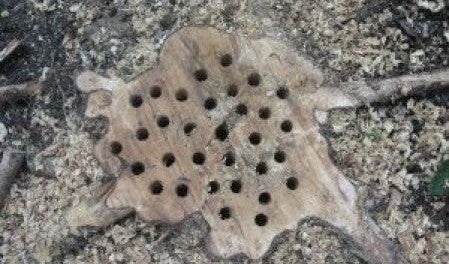Inexpensive Stump Removal from Potential Farmland

As cities sprawl further and further outward with urban boundaries being extended deeper and deeper into the country, the price of land is skyrocketing in many areas. What might have at one time been viable farmland is now being turned into subdivisions at an alarming rate. Areas that were once ‘out in the sticks’ are now closer to becoming neighborhoods with every single day that passes. With all of those land parcels that were once ideal for farming being snapped up for development, beginning farmers are being pushed outward as well, in some cases being forced to snap up raw land in order to be able to afford any land at all.
Raw land has both pros and cons. For starters, raw land is less likely to have chemicals in the soil since it has essentially be left untouched, making it beneficial for an organic operation. It is also possible to create your own farm plan for raw land in terms of what you want to place where versus having to work with someone else’s idea when you buy an existing farm. One drawback when it comes to raw land, however, is that it can at times be thickly wooded. In some cases, depending on the type of trees present, you may be able to call a lumber company to do a lot of the clearing work for you. Despite selling the lumber and putting some money in your pocket, you will still have plenty of work to do in terms of stump removals which can send that money right back out if you don’t find a financially feasible way to finish the job.
Tree stumps are one of the biggest obstacles when it comes to developing farm land. Root systems can extend over great distances which can complicate planting if they are not removed. The process of removing tree stumps is no easy task and can require heavy equipment, making a mess of the ground in the process. Alternately, however, there is an easier option if you have about three to four months to wait for the process to work.
Epsom salt is actually quite useful in the removal of tree stumps. Though Epsom salt is good for plants and used frequently in gardening, tree stumps are another matter. Essentially the addition of Epsom salt to a tree stump forces dehydration to occur which then causes it to die. Whereas ordinarily a stump can actually still generate new growth after the tree itself is cut away, the addition of Epsom salt will draw away the stump’s life source, that being moisture, forcing it to die and become brittle which then makes it easily removable by axe and shovel.
In order to kill stumps with Epsom salt, you must first drill holes into the stump. There should be at least a dozen or so, with more for larger stump. Drill holes to deep within the stump at approximately a half inch to an inch in diameter, then fill these holes half way with Epsom salt and top them off with water, covering the top of the stump as well. In the interest of saving time, the two can be combined ahead of time and poured in from a pitcher as well. Finally, wrap the stump in black trash bag and wait. Upon checking back three or four months later, you should find a dehydrated stump that is ready for easy removal, although extremely large stumps may take longer and benefit from a follow up treatment.
Epsom salt is inexpensive to purchase and easy to come by in drug stores and big box stores. If you have the time to wait, using it to kill stumps is the most environmentally friendly and safe option for freeing up potential farming space occupied by stumps. For mere pennies you will be able to transform raw land into viable farm land to at last get your dream of a beginning farm underway, which makes Epsom salt a deal that’s hard to beat.







 Your Privacy Choices
Your Privacy Choices
Leave a comment